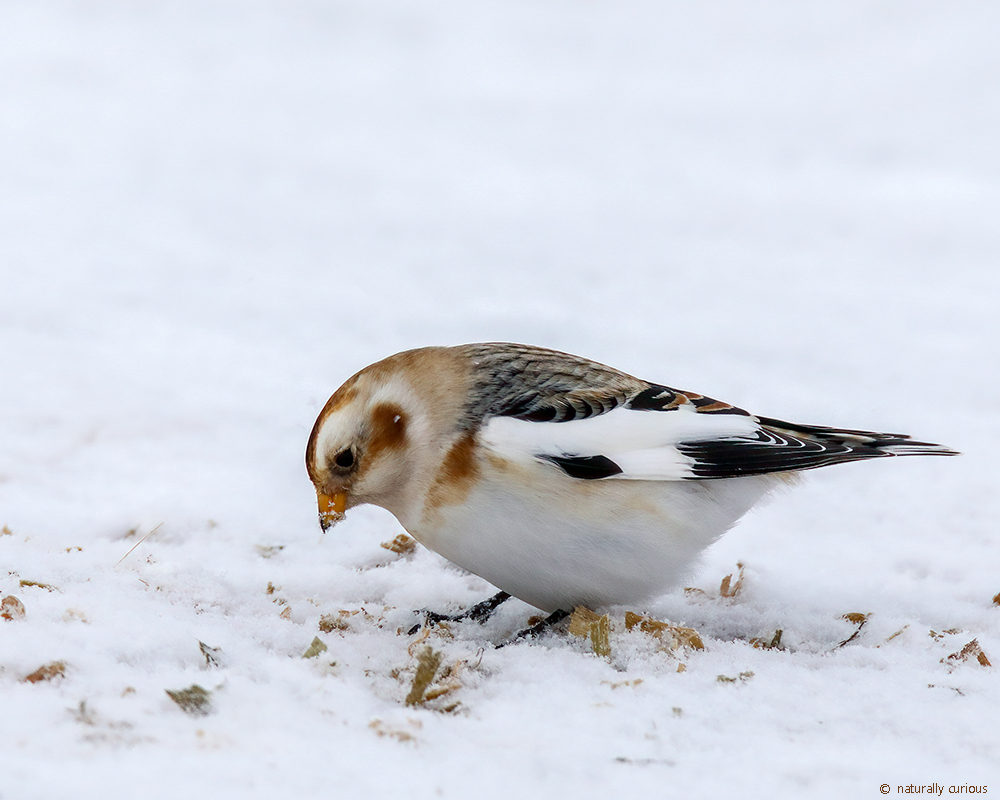Snow Buntings: Winter Visitors From The Far North

This Snow Bunting, feeding on farm silage in the Champlain Valley, migrated from the high Arctic to spend several winter months in Vermont where temperatures are comparatively warm and food is more available. In about two months he and other males will return to the arctic to nest in temperatures as cold as -22°F., where most of the seeds that they feed on are still covered with snow. Females will migrate back to their breeding grounds four to six weeks later.
Why do male Snow Buntings depart from warmer winter climes to begin their breeding season in such a hostile environment? They do so because competition for their rock crevice nest sites is so severe. Typically arctic songbirds nest in the open, but the eggs and young of crevice-nesting Snow Buntings experience far less predation than those of other birds. Even though their nests are lined with fur and feathers, these cracks and crevices can be quite cold and detrimental to developing eggs, so the male buntings feed their mates during incubation so that the incubating females can remain on the nest for long periods, keeping their eggs warm.
Naturally Curious is supported by donations. If you choose to contribute, you may go to http://www.naturallycuriouswithmaryholland.wordpress.com and click on the yellow “donate” button.


















Cute litt
February 3, 2023 at 9:26 am
What a little cutie! So many animals are so unique & have great adaptations, but birds, to me, are so amazing! What tough creatures to be out in such extreme cold. Feeders are filled, including suet. Stay safe &/warm!
February 3, 2023 at 9:26 am
Fascinating!
February 3, 2023 at 10:06 am
Wow , tough bird
Sent from my iPhone
<
div dir=”ltr”>
<
blockquote type=”cite”>
February 3, 2023 at 6:13 pm